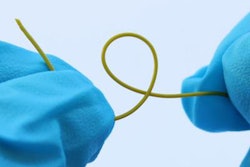
Newly discovered sensory cells in gums that protect the mouth from infections that cause tissue and bone damage to teeth may be the answer to periodontitis prevention treatments in the future, according to new research.
A study published on October 3 in Nature Communications found that mice that didn't have gingival solitary chemosensory cells (gSCCs) or SCC taste-signaling molecules, which help control the amount and types of bacteria in the mouth, developed more severe ligature-induced periodontitis with increased levels of alveolar bone loss.
Since gum SCCs in humans play similar roles in regulating the makeup of the oral microbiome, these findings may lead to personalized dental treatments against gum disease, according to the researchers.
"gSCCs may provide a promising target for treating periodontitis by harnessing innate immunity to regulate the oral microbiome," wrote the authors, led by Xin Zheng, a dental science researcher from the National Clinical Research Center for Oral Diseases at the West China Hospital of Stomatology.
Imbalances in the bacteria and other microorganisms of the mouth cause periodontitis, which is the most common cause of tooth loss worldwide. Until now, knowledge has been very limited on the specific host receptors that detect pathogenic oral bacteria, their metabolites, or both.
Solitary chemosensory cells are tissue protectors that use bitter-taste receptors Tas2r and taste transduction elements to detect pathogenic bacteria, which trigger host defenses to control the infection. These cells have been found previously in other body parts, including the gut and urinary tract, but not the gums.
For this study, the researchers induced periodontitis in mice by tying silk ligatures around their left maxillary second molars. After one week, they recovered the ligatures for microbial genomic DNA extraction and dissected the jawbones to measure for alveolar bone loss.
The results showed that knocking out taste-signaling molecules, such as gustducin, or the absence of solitary chemosensory cells in the mice increased their susceptibility to and severity of ligature-induced periodontitis. It also increased bacterial loads, reduced bacterial diversity, and rendered the microbiota more pathogenic. The increase in bacteria led to amplified tissue inflammation, which may lead to greater alveolar bone loss.
However, stimulating the cells' bitter-taste receptors with topical treatments of denatonium promoted the production of antimicrobial molecules, the researchers found.
The authors listed no study limitations, but they noted that additional studies are needed to precisely identify the role of gingival solitary chemosensory cells in the pathological process of periodontitis.
Since genetic differences in taste receptors are commonly detected in people, the dysfunction of taste-receptor-mediated innate immune responses could be used for chairside screenings for individuals who may be most susceptible to oral infectious diseases, according to the authors.
"This may lead to a new paradigm of personalized dental treatments against oral infectious diseases," they wrote.




















